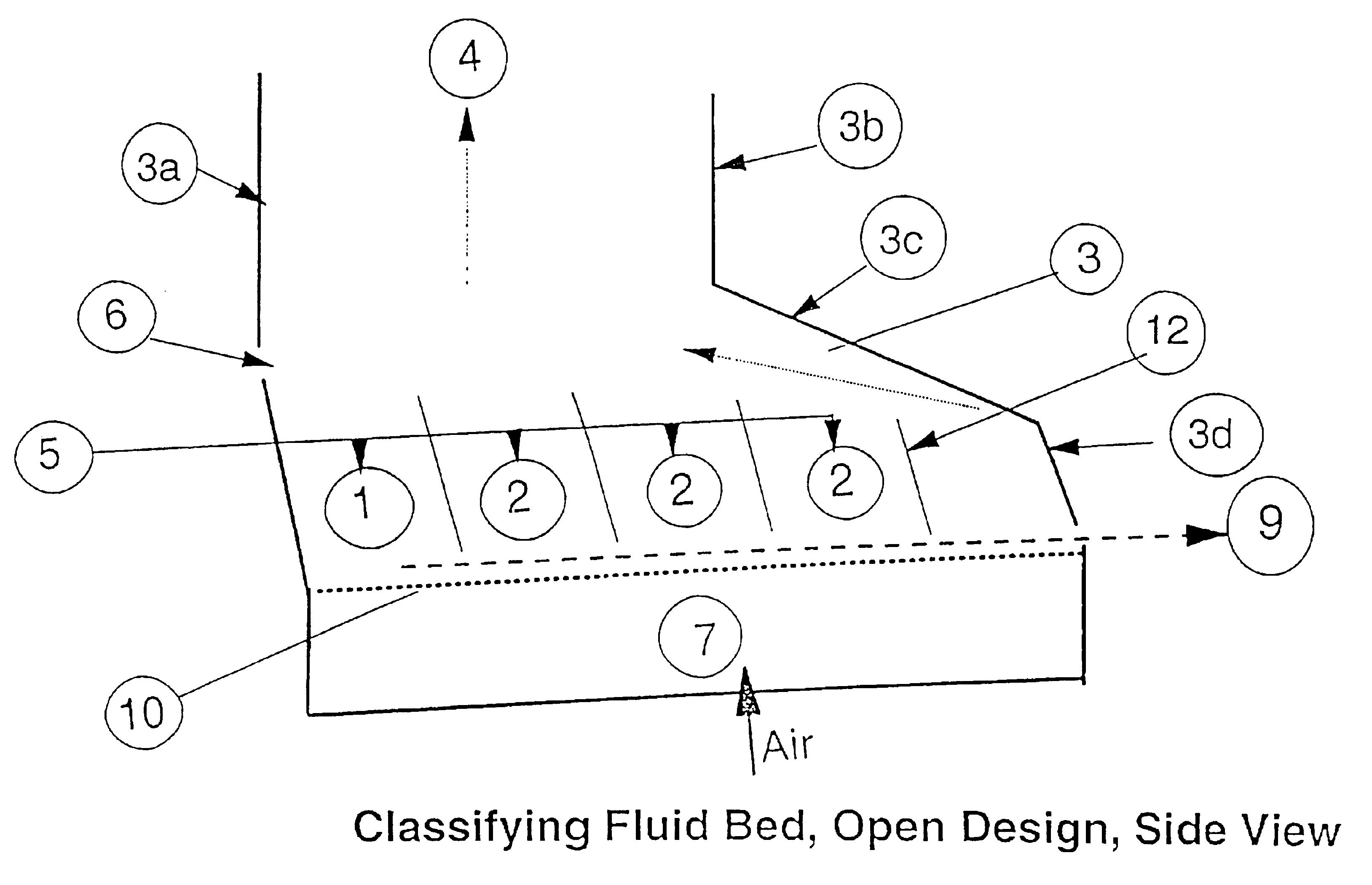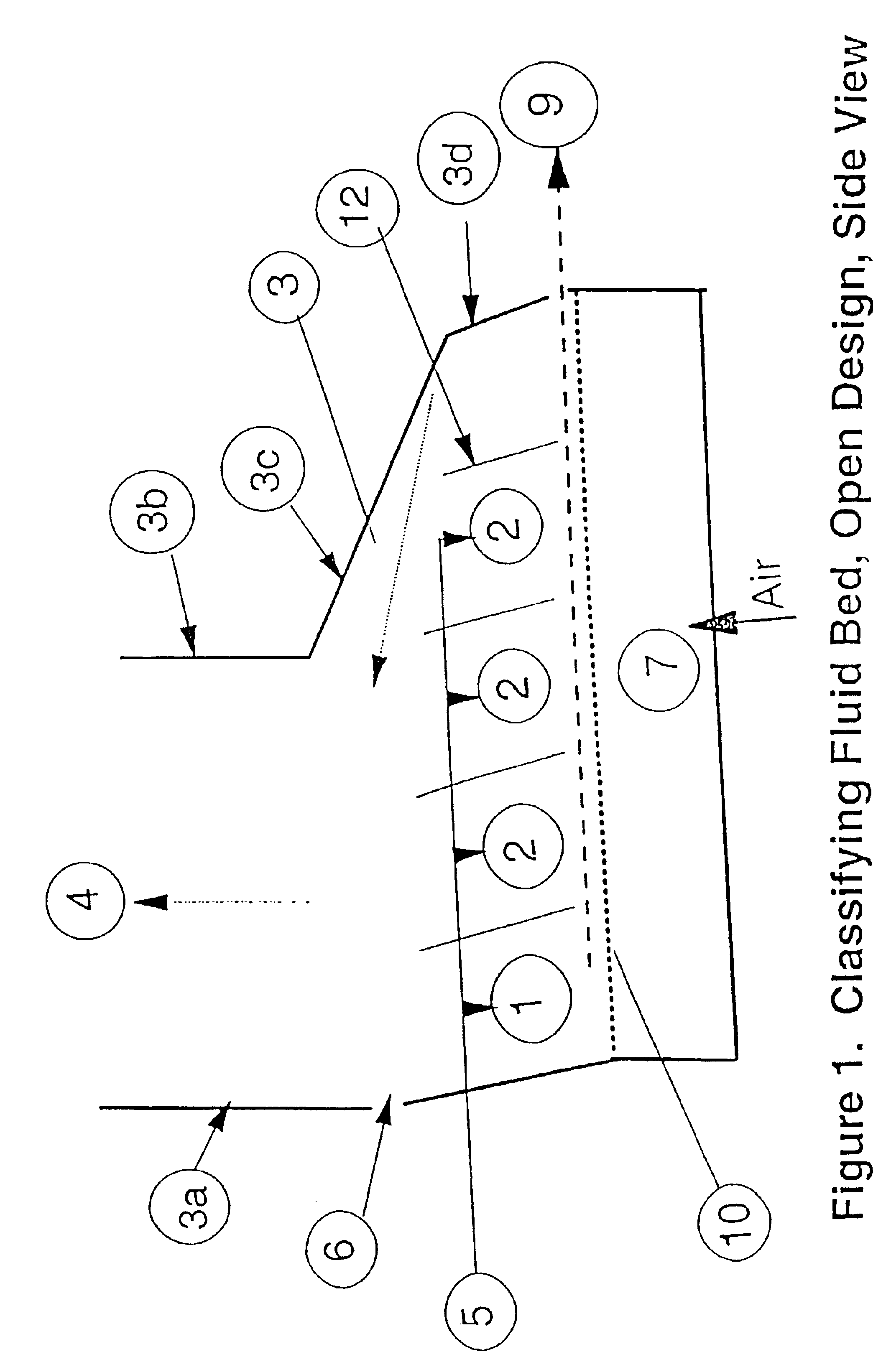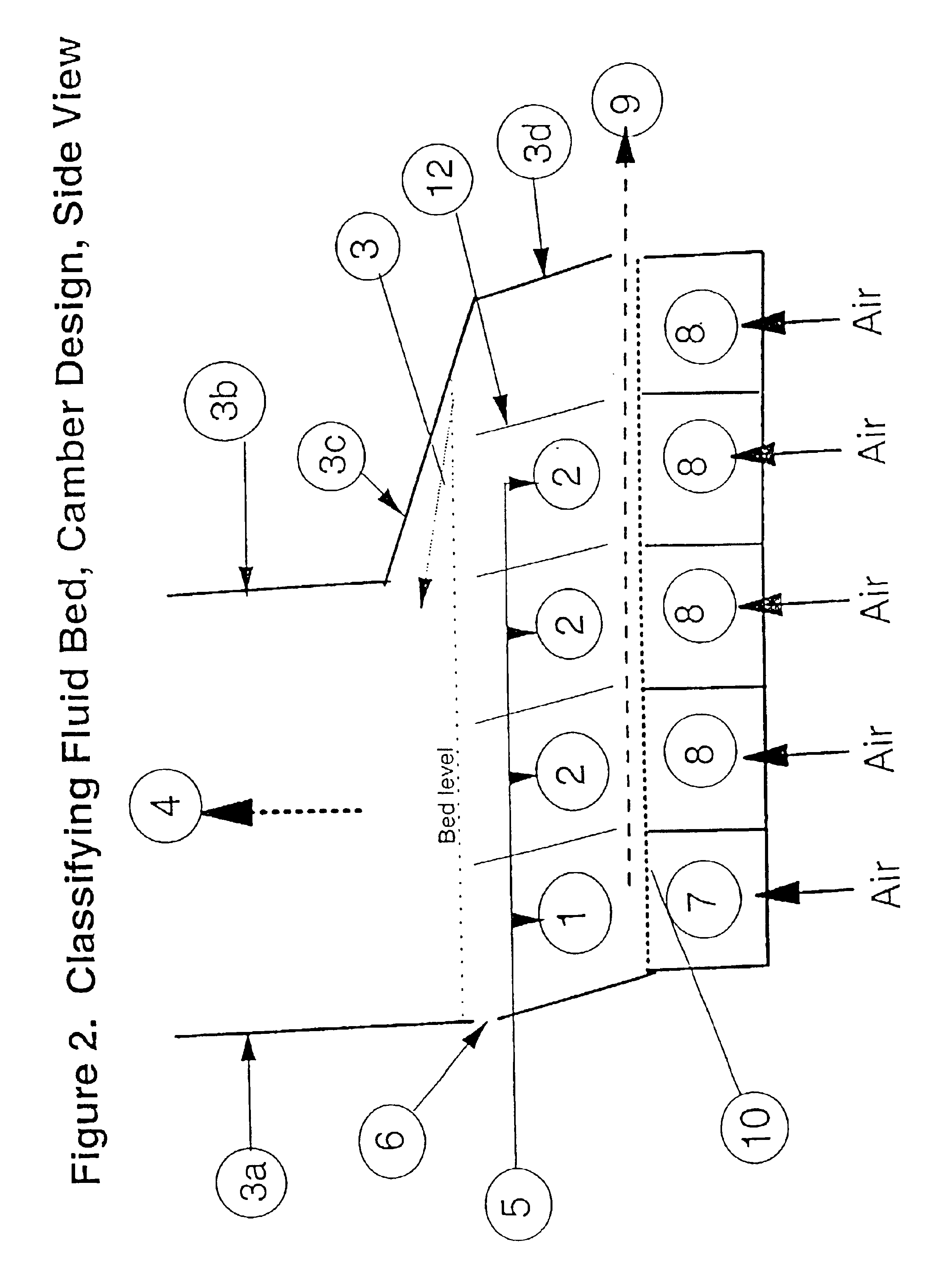Method and a device for processing a solution, melt, suspension, emulsion, slurry or solids into granules
a technology of granulator and emulsion, which is applied in the direction of solid separation, pneumatic table, chemistry apparatus and processes, etc., can solve the problems of limited interest in developing classifying granulators, design and operation of these plants, and limited the influence of other operating parameters
- Summary
- Abstract
- Description
- Claims
- Application Information
AI Technical Summary
Benefits of technology
Problems solved by technology
Method used
Image
Examples
example
This example shows test results achieved with a classifying fluid bed granulator unit as shown in FIG. 6. The unit was operated with the following parameters:Material: Urea granules with a bulk density of 1000 kg / m3 Airvelocity: 1.1-1.4 m / sAir temperature: Ambient, 20-22° CelsiusBed filling: 32.5-37 kgBed slope, α: 6°Baffle slope β: 15°.
Typical size distribution of the material in the test bed is shown in Table 1:
TABLE 1Typical size distribution in test bedAbove 6 mm1%Between 6.3-4.5 mm9%Between 4.5-3.5 mm28% Between 3.5-2.5 mm49% Between 2.5-1.6 mm11% Between 1.6-1.0 mm2%Between 1.0-0.0 mm0%
The tests have been performed with the aim of finding the most effective design, and a classification efficiency measurement has been introduced. The measurement calculates how the D50 of the outlet product compares to the D50 for the whole content in the bed. If the D50 of the outlet is equal to the total bed D50, the classification efficiency is 0%, which means there is no effect as compared t...
PUM
| Property | Measurement | Unit |
|---|---|---|
| Angle | aaaaa | aaaaa |
| Angle | aaaaa | aaaaa |
| Angle | aaaaa | aaaaa |
Abstract
Description
Claims
Application Information
 Login to View More
Login to View More - R&D
- Intellectual Property
- Life Sciences
- Materials
- Tech Scout
- Unparalleled Data Quality
- Higher Quality Content
- 60% Fewer Hallucinations
Browse by: Latest US Patents, China's latest patents, Technical Efficacy Thesaurus, Application Domain, Technology Topic, Popular Technical Reports.
© 2025 PatSnap. All rights reserved.Legal|Privacy policy|Modern Slavery Act Transparency Statement|Sitemap|About US| Contact US: help@patsnap.com



